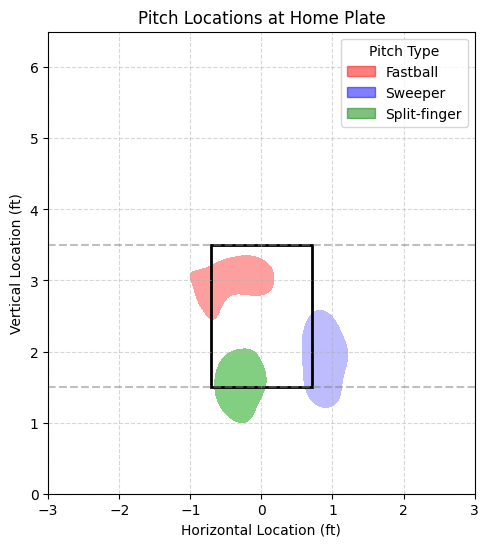What is Pitch Tunneling?
One of the largest challenges to hitting at a high level is being able to identify pitches. Top pitchers use this to their advantage by employing a technique called pitch tunneling. Pitch tunneling is when a pitcher makes multiple pitch types look the same for as long as possible with late break at the end. Think of when you have seen a hitter look silly chasing a slider away or get caught frozen on a fastball in the zone — these are a result of effective pitch tunneling.
The Science Behind Pitch Tunneling
At its core, pitch tunneling is about deception. When a pitcher throws multiple pitches with the same release point, arm speed, and initial trajectory, they create an illusion that makes it nearly impossible for hitters to differentiate between them until it's too late. The key factors at play include:
Release Consistency: If a pitcher’s fastball and slider come from slightly different arm slots, a hitter can detect the variation. The best tunnelers disguise all their pitches with near-identical release points.
Shared Ball Path: The longer multiple different pitches travel on the same trajectory, the harder they are to distinguish.

Late Break: The magic of pitch tunneling happens when the pitches finally separate late in their path, creating a sharp contrast at the moment a hitter commits to their swing.

A well-executed tunnel forces hitters into guessing, making them more prone to weak contact, swings and misses, or taking a pitch they expected to break differently.
The Impact of Pitch Tunneling on Hitting
Hitters rely on split-second reactions to recognize and track pitches. When facing an elite tunneler, they face several challenges:
Late recognition of pitch type leads to more swings and misses.
Increased chase rate on breaking balls that look like fastballs.
Poor quality of contact because they struggle to square up pitches that break late.
Some hitters combat tunneling by focusing on pitch sequencing tendencies and reading spin, but even the best still get fooled regularly.
How Pitchers Develop and Improve Tunneling
Pitchers looking to refine their tunneling ability can focus on:
Releasing all pitches from the same arm slot to minimize early detection.
Perfecting mechanics to ensure uniform arm speed across pitch types.
Using high-speed cameras and motion tracking to analyze their tunnels.
Optimizing pitch sequencing to keep hitters off balance.
A great example is Zac Gallen, who uses his fastball and curveball combination to devastating effect by keeping them in the same tunnel before the curve drops off the table.


